- Home
- Richard F. Weyand
Commander Page 6
Commander Read online
Page 6
“OK, so we end up providing both sides with warships?” Pinter asked.
“Yes, and we’re the good guys for doing it, because we’re allowing them to protect themselves from Sintar,” Morel said. “And if people start commerce raiding against the supplies going to their opponent, whose ships are they going to target? Not ours. If they tick us off, we might stop providing warships and all the support you need for them. Parts and ammunition and the like. So Sintar’s freighters are going to be the targets.”
“Which increases the risks for their shipping companies and helps hold down Sintar’s expansion into the shipping market,” Pinter said. “I see. All right, gentlemen, I like it. Let’s work up the details and then get some of this under way. From what Karla said, the need is pressing, and getting more so.”
Design Reviews
Fred Dunlop was waiting for feedback from his evaluation committee on the warship design submissions. He hoped the vendors were more in tune with what they were looking for this round. They were a year into the RFP process, and still didn’t have even rough ship designs they could start working up detailed designs around.
Martin Stump popped by his office. Stump was a senior guy in the evaluation group.
“Hi, Fred.”
“Hi, Marty. Whatcha got?”
“I’ve got a couple of VR simulations you should see.”
“New ship designs?”
“Yeah. You gotta see this.”
Stump pushed him the simulation file, then sat down to wait.
Dunlop opened the file, and was in immersive VR in deep space. Two dozen of the stupidest looking ships he had ever seen were running from three dozen conventional battleships. The fugitive ships were about the size of a light cruiser, with what must have been a battleship-grade impeller sticking well out the front. The ships looked like cupcakes with pencils stuck in them.
The cupcakes – he couldn’t think of them any other way – seemed unable to get out of the extreme range of the battleships. It looked like everybody was accelerating at about 1.5 g. The battleships were shooting at the cupcakes, but their tight formation allowed a coordinated point defense that shrugged off the missiles.
Then the cupcakes cut power, flipped in seconds, fired half a dozen shots each in quick succession, flipped back, and reengaged the engines. The half-a-dozen battleships they’d targeted could not counter the swarmed fire and disappeared in titanic explosions. He rocked with the concussion, which was technically incorrect for a battle in space, but was, he had to admit, a compelling effect.
The cupcakes flipped and fired and flipped again, and another six battleships disappeared. The two forces were now down to parity in number of hulls. He couldn’t get over how fast they could flip ship, but this time he saw the plasma jets emitted from a point about two-thirds of the way out the pencil. Ah, so that was how they were doing it. Smart.
The attacking battleships, finding their point defense ineffective against the first massed missile attacks, had gone to evasive maneuvers. But they hadn’t fared any better against the second attack.
Then the cupcakes flipped again, but this time they reengaged their engines toward the battleships, and their acceleration at least tripled. They must be doing close to five gravities. Their guns went to continuous fire as they closed on their enemy, but they continued their disciplined fire on six ships at a time.
The enemy started scoring occasional ships, too, and the cupcakes changed their formation to close their point defense shield as ships dropped out.
Then it was over. All thirty-six battleships were destroyed, and nineteen of the pencil-speared cupcakes remained.
Dunlop dropped out of VR to find himself back in the quiet environment of his office, with Stump looking on. The transition out of VR was more disorienting than the transition in had been. After that stupendous battle, the quiet mundanity of his office was more shocking than the transition to deep space.
“Wow. That was something. Are those fast flips even possible, though? That didn’t look real,” Dunlop said.
“They’re dead on the performance projections in the written submission. Packing all the mass up tight at the breech of the impeller reduced the polar moment, and they have pitch and yaw thrusters at the center of percussion of the impeller.”
“And that was a cruiser-type vessel with a battleship impeller, wasn’t it?”
“Yep,” Stump said. “Their submission basically said not to build any battleships unless we made a bigger impeller to mount in them.”
“Why would you, with a cruiser like that? And their acceleration in the final charge. What was that, 5 g or so?”
“More like six. All in the performance numbers in the submission.”
“And their submission was signed off by a professional engineer, as required?”Dunlop asked.
“It was actually signed off by two Imperial engineers.”
“Two Imperial engineers? What outfit is this?”
A professional engineer was one thing, an Imperial engineer was another thing altogether. The highest certification possible, achievable only after twenty years of experience and rigorous examination, and revocable at any time for any of a number of reasons, especially for any hint of corruption or shading of the numbers.
“Yup. Two Imperial engineers. It’s a small outfit. Not a shipbuilder, more of an engineering and design studio. But get this. The sign-offs were Sobol and Stewart.”
“Not Ilia Sobol and Robert Stewart,” Dunlop said.
“Yup.”
“Criminy.”
“Hey, I haven’t even shown you the second simulation yet.”
“A second simulation?”
“Yeah. For the picket ships,” Stump said.
Stump pushed Dunlop a second VR file, and Dunlop opened it. This time he was in the murky, swirly gray of hyperspace watching a battleship approach. A second ship, a small dart of a thing, appeared and targeted the battleship. The battleship tried to evade the attacker, but it was way too slow to turn and the attacker was insanely maneuverable. The small ship impacted the battleship near the engines and penetrated, almost completely inserting itself into the bigger ship. A gout of plasma ejected from the impact hole before the battleship’s engines stopped and the ships and the simulation dropped out of hyperspace. The battleship was jetting the attacker’s plasma from multiple holes now, then its own containment failed, and it blew up.
Dunlop dropped out of VR.
“How did they get such penetration of the bigger ship?” Dunlop asked. “It should have bounced off.”
“The bows of the picket ship is a cross-point arrowhead of depleted uranium. They tucked plasma yaw and pitch thrusters into the corners. That’s how they got the maneuverability.”
“And the flood of plasma into the bigger ship?”
“The plasma conduit to those thrusters is bigger than it needs to be,” Stump said. “Much bigger.”
“OK, so they punch the hole and then the containment failure at the end of the plasma conduit jets engine plasma into the target. No ship will survive that. Very slick.”
“Yup. Also signed off by Sobol and Stewart.”
“Is there any other design that comes even close to these?” Dunlop asked.
“No. Not even close. And they revamped the construction process, too. Modern cargo shuttles are big enough to carry larger subassemblies to orbit, so they propose mass-producing major subassemblies ground side and just assembling them in spacedock. Should cut spacedock time down to less than half what it is now.”
“That’s slick, too.”
“Yeah, but there’s a problem,” Stump said. “These aren’t full design packages. I mean, not down to nuts and bolts and part numbers and such. There’s one more pass to go. Part of being an independent design shop rather than a current shipbuilder, I suspect. But they are clearly the best high-level designs. So now what do we do?”
“Well, first, let’s eliminate the battleships from the schedule, and spread the volume over
the other three types. Or, maybe better, eliminate the destroyers and name each ship type not by the ship’s size but by the size of the impeller.
“Second, let’s have the two companies submitting the second-best proposals finish the design work on these designs to generate the whole package, and then pick the best of those.”
“OK, that makes sense. What about the design royalties?” Stump asked.
Dunlop thought about it for several seconds.
“How about this? Split them between the design house that did the high-level designs and the shipbuilder that wins the detailed design competition. Fifty-fifty. That sound OK?”
“Yeah. That sounds fair. Neither of them can do without the other, so fifty-fifty works for me.”
Jared Denny got the mail message from the ship acquisition department. ‘Notification of RFP Results.’ He just stared at the subject for several minutes. What was it going to be? Well, he’d never know if he didn’t look.
He opened it and scanned down the document. Picket ships were listed first. There they were! Sintar Specialty Services. Wait. What was this? Half award, for the high-level design. Detail design to be done by one of two big shipbuilding firms, who would compete for it. Well, that was disappointing. Still a lot of money, though.
He continued scanning. There they were again, for light cruisers. Half award. And heavy cruisers. And battleships. Half awards all.
Wait, what about destroyers. He scanned back up the document. Oh, here it was, with a note. ‘All ship classes are determined by the size of the impeller. No destroyers will be built. The expected numbers of destroyers will be spread out among the other ship classes.
Wow. Oh, wow with bells on it. They would get half the design royalties for every ship the Navy was going to build. That was a ton of money.
Another mail came in from the ship acquisition department. ‘Request for Design Presentation.’ He opened it. They wanted Sintar Specialty Services to present the high-level designs to the engineering staffs of the two competing shipbuilders who would compete for the detailed design work. Well, they could manage that.
He called an emergency meeting in VR in the conference room.
Dunham was meeting with his commanding generals for their weekly meeting.
“I have progress to report on the new warship designs, Sire,” Admiral Leicester said.
“Have we finalized the designs, Admiral Leicester.”
“No, Sire. We clearly have a winner for the high-level design, but there will need to be a competition on the detail designs.”
“I worry about the time this is taking, Admiral Leicester.”
“Understood, Sire, but these designs are radically different than anything we’ve ever done. The head of ship acquisition told me the winning battleship design looked like a cupcake with a pencil stuck in it. He’s not far off. But the performance is unbelievable. I have simulations for you to VR, one of the battleship design and one of the picket ship design.”
Leicester pushed the VR files to the Emperor and all three of them waited as he viewed them.
“That’s incredible, Admiral Leicester. Those simulations were in real time?”
“Yes, Sire. And the battleships were current generation ships, operating at combat power levels.”
“And the new design took them on at a two-to-three disadvantage and destroyed all the conventional battleships with a loss rate of twenty-one percent?”
“Yes, Sire. And with no sailors lost.”
“All right. Well, I certainly concur with the choice of design. Why were they not detailed enough to begin with, Admiral Leicester?”
“The winner was a small design and engineering firm, Sire. Not a big shipbuilder. They’ve never done this before.”
“And we’re sure they’ll perform as advertised, Admiral Leicester?”
“Yes, Sire. The submission was signed off by two respected Imperial engineers.”
“OK. Well that’s good news. Some progress at last. Congratulations, Admiral Leicester. Now what’s next on our agenda this morning?”
Fred Dunlop waited for the official starting time in the lecture room they were using for the presentation. There were eighteen people sitting off to one side, whom he presumed were staff of Sintar Specialty Services. Based on the size of the company, it might be all their staff. Most of them were very young – in their mid to late twenties – but there were two older men among them. They talked among themselves as they waited.
With minutes to go, the technical people from the two shipbuilders who had been selected to compete for the detailed design began showing up. By the official start time, there were only twenty people from the huge engineering staffs of the two firms present. Dunlop had been afraid of this. The small upstart firm had beat all the big guys at their own game, and now they weren’t going to send the appropriate team to learn the designs.
Navy personnel – including the highest ranks – had been blown away by the performance of the proposed designs. Dunlop hoped the big shipbuilders didn’t ignore or stray from the designs, but he feared they would, and today’s attendance was a pretty pointed omen of it. He sighed. People were people, even in engineering. Nothing to do but get on with it.
The lecture hall was, of course, a simulation in VR. When people entered the channel as guests, the VR just added seats and made the room bigger as required. As it was right now, it would seat about fifty people. Dunlop walked down into the speaker’s well and addressed the group.
“Good morning, everybody. You all know why we’re here. So without any further ado I will introduce Jared Denny, the head of Sintar Specialty Services.”
Denny got up and moved down into the speaker’s well while Dunlop returned to his seat.
“Thank you, Mr. Dunlop. We will present the picket ship design first, and the warship designs second. Giving our presentations today will be Mr. Ilia Sobol and Mr. Robert Stewart.”
A murmur went up from the shipbuilder representatives at that. Engineers all, no one needed to tell them who Ilia Sobol and Robert Stewart were. All of them probably had at least one of each of their books in the quick-reference shelf of their VR library.
“Presenting the design for the picket ships will be Ilia Sobol. Mr. Sobol, you have the floor.”
Sobol walked out into the speaker’s well of the room.
Dunlop turned back and looked at the audience behind him. They had clearly communicated back to their friends in the shipbuilders’ engineering departments. Additional attendees were appearing, often in groups of three or four or six. The room had already grown to a hundred people, and it expanded again as he watched.
“Perhaps I’ll wait a moment until everyone gets here,” Sobol said with humor.
He waited five minutes. By the time he started his presentation, the room had expanded to hold five hundred, and there were maybe twenty seats left.
Dunlop relaxed. Jared Denny and his small firm were smart enough to hire Sobol and Stewart as advisers, they were smart enough to win the design competition, and now they had proven smart enough to get the respectful attention of the shipbuilders’ engineering departments for their presentations.
This could all work out after all.
After the presentations, the shipbuilders’ engineering people left. Most of Sintar Specialty Services’ people left as well. Jared Denny came up to Dunlop with Sobol and Stewart in tow.
“Mr. Dunlop, Mr. Sobol and Mr. Stewart.”
“Pleased to meet you gentlemen,” Dunlop said. “Those were wonderful presentations. Thank you.”
“Thank you for the opportunity, Mr. Dunlop,” Sobol said.
“Yes, Mr. Dunlop. Thank you so much,” Stewart said.
They all shook hands during the greetings, then Denny nodded to Sobol.
“Well, Mr. Dunlop, it was nice to meet you. I must be getting along.”
“I as well,” Stewart said. “Thank you again, Mr. Dunlop.”
The two presenters disappeared from the VR.
“Mr. Dunlop, I have a question for you, if I might.”
“Of course, Mr. Denny. Go ahead.”
“Now that we have turned over the detail design work to the two competing shipbuilders, we’ve been looking into our next project. To that end, I wonder if you might set us up with some interviews with Navy personnel.”
“I can certainly do that. What sort of Navy personnel?”
Denny had done his research, and knew exactly what they needed.
“Senior chief petty officers. Fellows with twenty or more years in the service. But not planetside. We want shipboard types.”
“Senior chiefs? Sure. I can set that up, Mr. Denny.”
“Excellent, Mr. Dunlop. Remember. Shipboard types.”
“Will do, Mr. Denny.”
And that was how Senior Chief Petty Officer Gordon Willet once more found himself directed to make himself available for interview by yet another bunch of ivory-tower types.
“Oh, fer crissake.”
Jared Denny told everyone else they could watch the interviews in management mode, and message him questions during the interview, but he wanted to do the interviews one on one. He thought he would be more likely to get completely candid information one on one.
One thing the others did not know. Denny grew up in hardscrabble conditions, and only his grandmother’s insistence he do his schoolwork had saved him from a life on the streets. The new school curriculum had allowed him to find and develop his passion. For him that had been mechanical engineering. Scholarships to the best universities for undergrad and grad school had given him the polish he needed for his current position, but he had not forgotten the streets.
His first interview was with Gordon Willet, a senior chief with twenty-four years in His Majesty’s Navy.
“Good morning, Senior Chief. Thanks for meeting with me.”
“Orders is orders, Mr. Denny.”

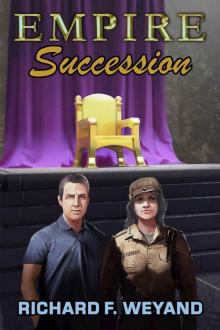 EMPIRE: Succession
EMPIRE: Succession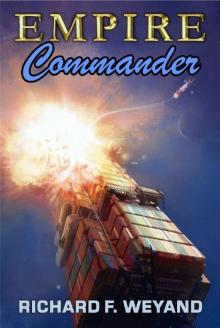 Commander
Commander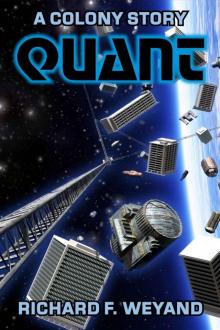 QUANT (COLONY Book 1)
QUANT (COLONY Book 1) EMPIRE: Renewal
EMPIRE: Renewal GALACTIC SURVEY (COLONY Book 3)
GALACTIC SURVEY (COLONY Book 3) Campbell- The Problem With Bliss
Campbell- The Problem With Bliss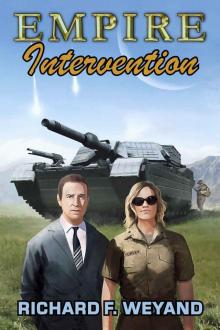 EMPIRE: Intervention (EMPIRE SERIES Book 13)
EMPIRE: Intervention (EMPIRE SERIES Book 13)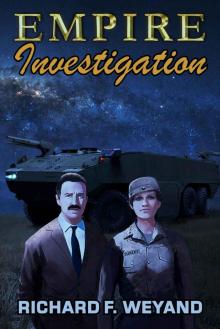 EMPIRE: Investigation
EMPIRE: Investigation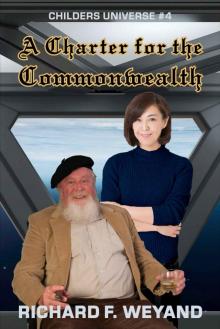 A Charter for the Commonwealth
A Charter for the Commonwealth EMPIRE: Resistance
EMPIRE: Resistance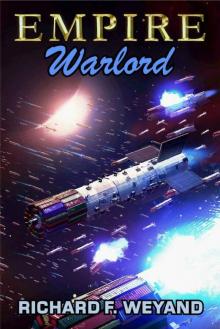 EMPIRE: Warlord (EMPIRE SERIES Book 5)
EMPIRE: Warlord (EMPIRE SERIES Book 5)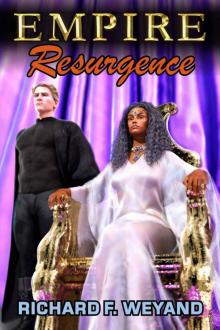 EMPIRE: Resurgence
EMPIRE: Resurgence EMPIRE: Conqueror (EMPIRE SERIES Book 6)
EMPIRE: Conqueror (EMPIRE SERIES Book 6)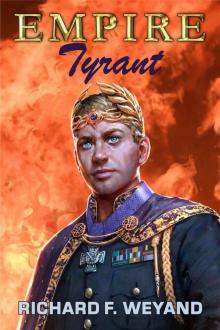 Tyrant
Tyrant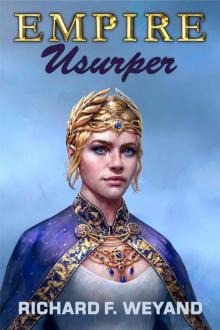 Usurper
Usurper Galactic Mail: Revolution! (Childers Universe Book 3)
Galactic Mail: Revolution! (Childers Universe Book 3) Galactic Mail_Revolution!
Galactic Mail_Revolution! Childers
Childers CHILDERS_Absurd Proposals
CHILDERS_Absurd Proposals